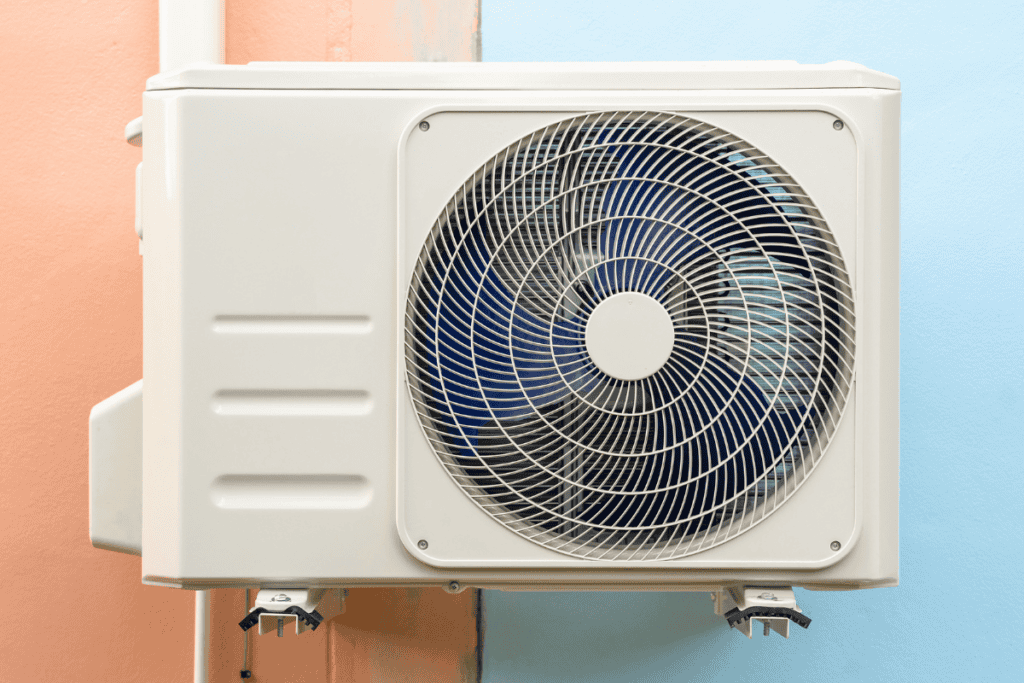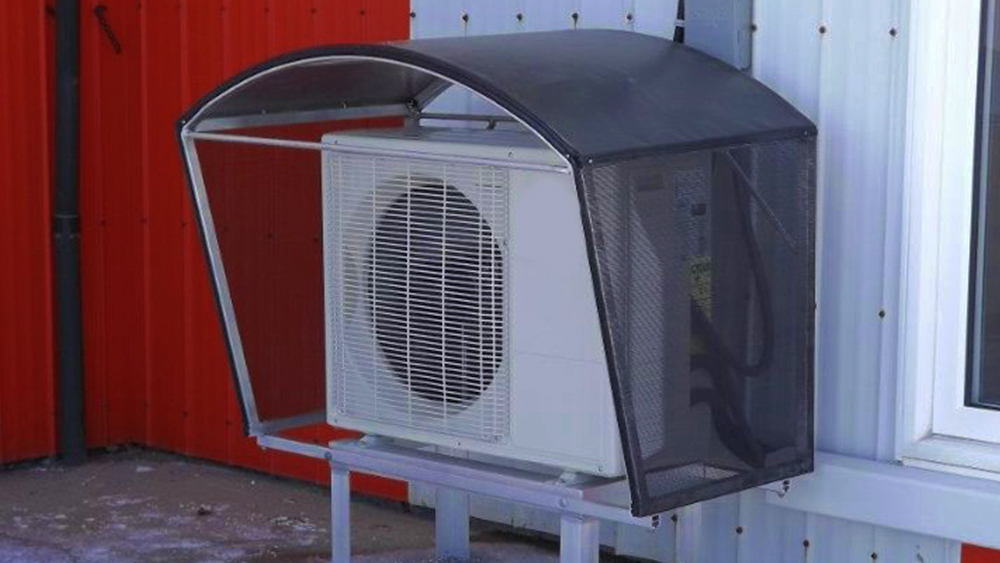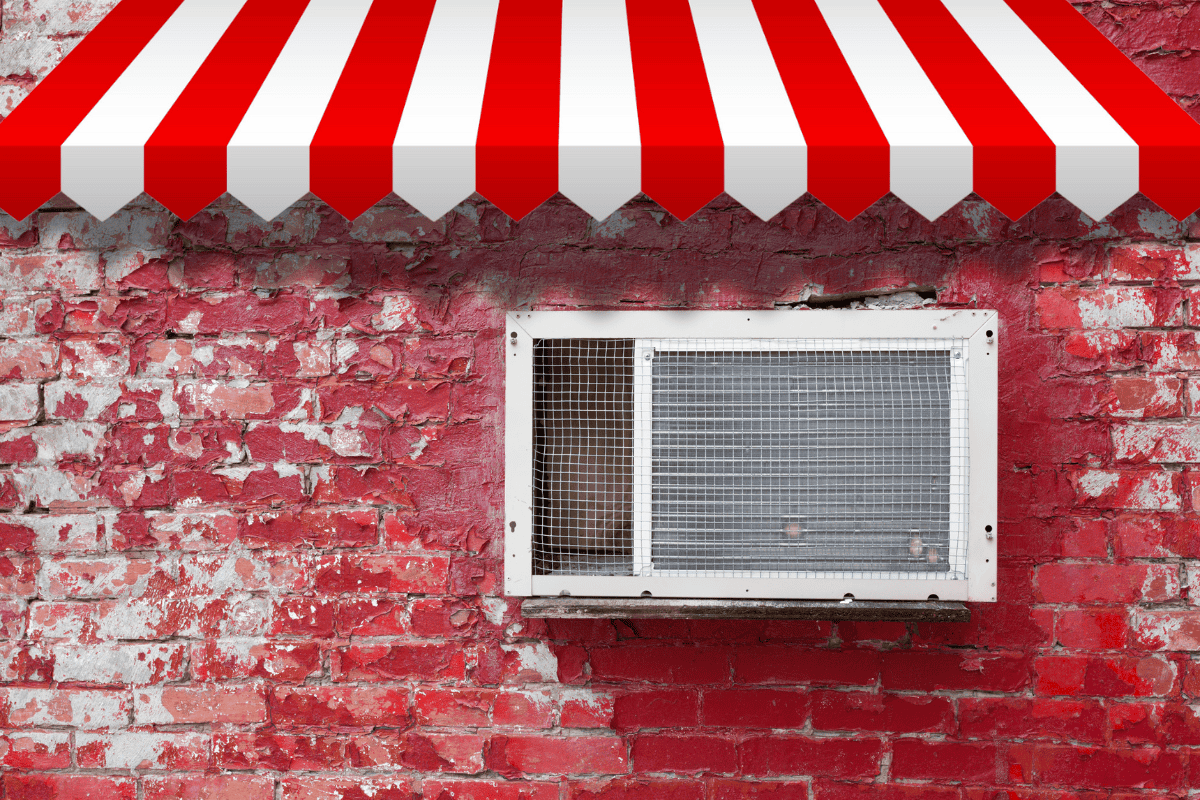[8 Easy Ways] How To Shade Your Outdoor AC Unit From Sunlight

As a homeowner, you want to make sure that your air conditioning system operates at peak performance, providing reliable cooling and energy efficiency. However, many people overlook the importance of protecting their outdoor AC unit from the sun. Exposure to the sun’s intense rays can lead to a host of problems, from reduced efficiency and increased energy consumption to potential damage to internal components.
By shading your air conditioner outside unit from direct sunlight, you can help prevent overheating, which can strain the system and cause it to work harder than necessary. This not only leads to higher energy bills but can also shorten the lifespan of your air conditioner.
In this article, we’ll explore 8 easy ways to shade your outdoor AC unit from sunlight. We have compiled a list of effective strategies that you can implement to protect your investment and keep your home cool and comfortable.
From simple DIY solutions to professional installations, we’ll guide you through the process of creating a shaded environment that promotes optimal airflow and reduces the risk of sun-related damage.
Contents
- 1 How To Protect Your Outdoor Unit From Sunlight
- 1.1 1. Install a shade structure
- 1.2 2. Plant trees or shrubs for natural shading
- 1.3 3. Use specialized covers or awnings
- 1.4 4. Position the outdoor unit strategically
- 1.5 5. Utilize reflective materials
- 1.6 6. Create a DIY shade canopy
- 1.7 7. Install a pergola or trellis
- 1.8 8. Consider smart landscaping
- 2 Advantages Of Protecting Your Outdoor AC Unit From Sunlight
- 3 Contact HVAC Angel For All HVAC Needs
- 4 Frequently Asked Questions
How To Protect Your Outdoor Unit From Sunlight
1. Install a shade structure
Installing a shade structure above your outdoor AC unit is an effective way to block direct sunlight and reduce heat absorption. By providing a barrier between the sun’s rays and your air conditioning unit, you can help prevent the system from overheating and maintain optimal performance. A well-designed shade structure can also enhance the aesthetics of your outdoor space while protecting your investment.
2. Plant trees or shrubs for natural shading
Strategically planting trees or shrubs around your outdoor unit can create natural shade and help lower the surrounding temperatures. According to the U.S. Department of Energy, properly placed trees and shrubs can reduce air conditioning costs by up to 50%.
When selecting plants, consider their mature size, growth rate, and potential impact on airflow around the unit. Avoid placing vegetation too close to the AC unit, as this can restrict the flow of air and hinder performance.
3. Use specialized covers or awnings
Installing a cover or awning specifically designed to shield your outdoor AC unit from sunlight can offer protection while allowing for adequate airflow. These covers can also provide an additional layer of defense against debris and inclement weather, prolonging the lifespan of your air conditioner.
When choosing a cover or awning, make sure that it is made from durable, weather-resistant materials and allows for proper ventilation to prevent moisture buildup.
4. Position the outdoor unit strategically
When installing a new system or replacing an existing one, consider the placement of your outside unit. Located it in an area that minimizes direct exposure to sunlight, such as in the shade of a building or under a porch.
By strategically positioning your AC unit, you can reduce the amount of direct sunlight it receives, helping to maintain its efficiency and prevent unnecessary strain on the system.
5. Utilize reflective materials

6. Create a DIY shade canopy
For those who enjoy hands-on projects, building a DIY shade canopy can be an affordable and customizable solution to protect your outside unit from direct sunlight. Materials like fabric, PVC pipes, or wood can be used to create a structure that fits your specific needs and complements your outdoor space. When constructing your canopy, make sure that it allows for proper flow of air and is securely anchored to withstand wind and weather conditions.
7. Install a pergola or trellis
Adding a pergola or trellis near your outside unit can create a shaded area while enhancing the visual appeal of your outdoor space. These structures can be customized to provide partial or full shade, depending on the angle and spacing of the beams or slats. When designing your pergola or trellis, consider the path of the sun throughout the day to maximize shading benefits for your air conditioning unit.
8. Consider smart landscaping
Smart landscaping techniques can help protect your AC unit from direct sunlight while improving the overall energy efficiency of your home. By strategically placing shade-providing plants and structures, you can create a cooler microclimate around your air conditioner.
Additionally, using light-colored, reflective materials for hardscaping surfaces near your unit can help reduce heat absorption and minimize the workload on your HVAC system.
Advantages Of Protecting Your Outdoor AC Unit From Sunlight
1. Improved efficiency
Shielding your outdoor air conditioning unit from direct sunlight can significantly improve its efficiency. When your AC unit is exposed to the sun’s intense rays, the condenser coil absorbs heat, making it harder for the refrigerant to cool down.
By providing shade for your AC unit, you can help maintain cooler temperatures around the condenser, allowing it to operate more efficiently and effectively. This, in turn, reduces the workload on your air conditioning system, leading to improved performance and energy savings.
2. Energy savings
Protecting your outside unit from the sun can lead to notable energy savings. When your air conditioner doesn’t have to work as hard to cool the refrigerant, it consumes less energy. This translates to lower utility bills and reduced energy usage. By investing in a shade structure, planting trees for natural shade, or using specialized AC covers, you can keep your AC running efficiently and minimize your energy expenditure.
3. Extended lifespan
Exposure to direct sunlight can take a toll on your outside AC unit over time. The extra heat absorbed by the condenser coil can cause components to wear out more quickly, shortening the lifespan of your air conditioning system. By shading your outside unit, you can help protect it from the damaging effects of the sun, reducing the risk of overheating and extending its longevity.
4. Reduced maintenance costs
When your outside AC unit is protected from direct sunlight, it experiences less wear and tear. This can lead to fewer maintenance issues and repair needs over time. By keeping your air conditioner running efficiently and minimizing the strain on its components, you can reduce the frequency and cost of maintenance visits.
Regular upkeep, such as replacing air filters and scheduling professional tune-ups, can further enhance the benefits of shading your AC unit.
5. Enhanced comfort
A properly operating air conditioning system is essential for maintaining a comfortable indoor environment. When your outdoor AC unit is shielded from the sun, it can cool your home more effectively, providing consistent temperatures and improved humidity control.
This enhanced comfort level can greatly impact your overall well-being and productivity. According to the Environmental Protection Agency, maintaining good indoor air quality through proper HVAC maintenance can contribute to better health, reduced allergens, and improved sleep quality.
Contact HVAC Angel For All HVAC Needs
While there are many DIY strategies for shading your outside AC unit from sunlight, there may be times when professional assistance is necessary. At HVAC Angel, we understand that every home and HVAC system is unique, and what works for one may not be the best solution for another. That’s why our team of experts is here to provide personalized guidance and support whenever you need it.
If you’ve tried implementing various shading techniques but still find that your air conditioner isn’t performing optimally, it’s time to give us a call. Our professionals have the knowledge and experience to assess your specific situation and recommend the most effective course of action. Whether you need help selecting the right shade structure or diagnosing underlying problems with your AC unit, we’re here to help.
At HVAC Angel, we pride ourselves in delivering exceptional service and workmanship. Our technicians are highly trained and equipped with the latest tools and technology to ensure that your air conditioning system is running at peak efficiency.
Our friendly and knowledgeable staff is always ready to answer your questions, provide expert advice, and schedule a service visit at your convenience. With HVAC Angel on your side, you can rest assured that your air conditioning system is in capable hands.
Frequently Asked Questions
1. What is the best material to cover an air conditioner?
The best materials for covering an air conditioner are those that are breathable, weather-resistant, and allow for proper flow of air . Specialized AC covers made from materials like mesh or perforated vinyl are designed to protect the unit from debris and sunlight while ensuring adequate ventilation to prevent moisture buildup.
2. Can we pour water on AC outdoor unit?
No, you should never pour water on your AC outdoor unit. While it may seem like a quick way to cool the unit down, pouring water can cause electrical damage, rust, and other issues that can harm your air conditioner’s performance and lifespan.
3. Can I cover my AC unit with plastic?
Covering your AC unit with plastic is not recommended, as it can trap moisture and prevent proper flow of air. This can lead to condensation, rust, and even mold growth, which can damage your air conditioner and create health hazards. Always use breathable materials specifically designed for AC covers.
4. Can rain damage outdoor unit?
While outside AC units are designed to withstand rain, excessive exposure to water can cause damage over time. Heavy rain or flooding can lead to electrical issues, corrosion, and other problems that can affect your air conditioner’s performance.
5. What happens when water gets in your AC?
When water gets into your air conditioning system, it can cause a range of problems, including electrical shorts, corrosion, and decreased efficiency. Water can damage sensitive components like the compressor, fan motor, and electrical connections, leading to costly repairs or even system failure.



